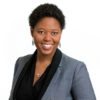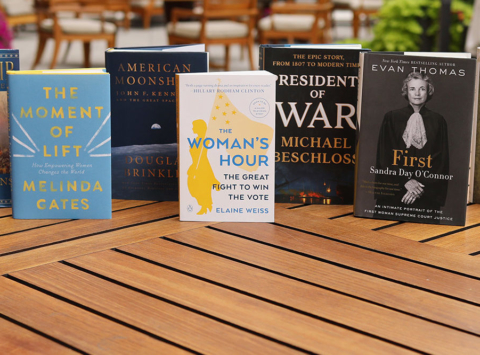This Spotlight is authored by guest writer Caitlin Kelly as part of a special blog series by the Case Foundation featuring Be Fearless stories from the field. Follow along with us as we meet people and learn about organizations that are taking risks, being bold and failing forward in their efforts to create transformative change in the social sector.
Too many people still think of his city as a morass of strife and failure, says Fagan Harris, co-founder and CEO of Baltimore Corps, an innovative two-year-old organization working to change that perception.
In April 2015, after police arrested Freddie Gray, a 25-year-old African-American Baltimore resident who later died in police custody, the city erupted, with at least 20 police officers injured, 250 people arrested and hundreds of businesses damaged. Vehicles and buildings were burned and pharmacies looted. It looked like an episode of the unrelentingly grim television show that, for many, still defines the city, The Wire.
Harris, who grew up in and around Baltimore and who returned in his late 20s, is passionate about the city’s potential, despite the “fact that too many people, when they think of Baltimore, imagine a broken, dysfunctional city. The truth is Baltimore is home to creative thinkers and truly visionary leadership working everyday to strengthen community,” he argues. This understanding of the opportunities that lie within Baltimore—and many other cities that share a similar history—is what drove Harris to develop a bold approach to forging a new talent pipeline for the city.
Baltimore Corps is a committed group of 35 skilled professionals working closely with a range of cause leaders at leading nonprofits, social enterprises and government agencies to accelerate and scale the impact of effective models for social change. Each cause leader and placement organization pays their Fellow(s) stipend and a nominal program fee to Baltimore Corps. Fellows work full-time at their placement and commit for one year.
Fellows earn a baseline stipend of $32,000; Baltimore Corps aggressively markets its fellowship to talented Millennials across Baltimore and the country, and the organization saw 500 applicants last year for its 35 fellowship positions. To insure a strong mix of local knowledge and fresh thinking, “the best of both worlds,” adds Harris, half of those accepted are city residents.
“At Baltimore Corps, we’ve made a big bet that Baltimore is a frontier of social change,” says Harris, a graduate of Stanford and a Rhodes Scholar. “What New York City is to finance and San Francisco is to technology, Baltimore is for social change. If we can get it right here, we can get it right anywhere. We have more models for strengthening communities than many other places.”
The Corps’ work combines several simultaneous initiatives: to attract the best and brightest workers committed to effecting social change, to help local nonprofits and government retain them so they can grow and better achieve their goals and, through those combined efforts, to help Baltimore thrive. The riots lent an urgency to Baltimore Corp’s work as his staff “did a ton of volunteerism” and several fellows, due to begin their jobs in September, began in June instead. “We responded urgently to help clean and build up and relocate people. As a place-based organization, it’s critical that you’re a good neighbor.”
The city needs them to stay—and they need good jobs; nine of ten of the first class of fellows were hired full-time at the end of their work with Baltimore Corps, a result that thrills, but doesn’t surprise Harris. “We work hard to recruit for fit,” he says.
But initially attracting bright, ambitious fellows who’ll choose to make a life in Baltimore after their year’s commitment is a challenge, Harris admits. “It’s working so far, but it is a challenge.” Popularly, Baltimore is still seen as a second or third-tier city, Millennials are “very, very mobile” and many are deeply wary of any work involving government. To sweeten the offer, the program opens a deep network to fellows, offering ready access to corporate executives, even the city’s mayor, which would be nearly impossible in a larger city.
Baltimore Corps, unusually for a new, growing nonprofit, relies heavily on technology and data to keep careful track of fellows’ work, of their satisfaction and their work’s impact, checking in with each of them every 90 days. The hands-on approach can be emotionally draining, he admits. “This is risky, hard work. It can be heart-wrenching and lead to some soul-searching conversations.” The diversity of our corps and placement partners is powerful but it also challenges…A leader with an Ivy MBA tends to rely on different approaches than a leader who hasn’t graduated high school, and pairing the two has produced “abundant examples of friction,” Harris admits. “We ask for humility and patience. It’s not something we try to paper over.”
“We need more people in the fight putting their shoulder to the wheel and pushing,” says Harris. Bringing talent into Baltimore to partner with the city’s most promising cause leaders and social impact organizations propels ambitious professionals and graduates eager to accelerate their social justice careers, and the city has seen an out-migration of people in their 20s and 30s, leaving local groups and agencies hamstrung, he says. “When we think about scaling the most important and impactful work, we have to ask ‘What’s the hold-up?’ It’s not money or a lack of ambition. It’s deploying the right human capital to drive scale.”
After a local group, Thread, which helps underachieving high school students, found new blood through Baltimore Corps, the program scaled their organization by a third.
The fellows work with a wide range of partners, some with social entrepreneurs who are building organizations with only two or three people to large, bureaucratic and long-established agencies like the City Health Department. “That’s maybe non-traditional,” says Harris, “but we need to work with all of Baltimore. That’s really been a value of ours since Day One.” Doing so effectively means creating what he calls “a tapestry” of small and large social enterprises, nonprofits and government agencies and departments “working together to meaningfully promote the city.” Key to his vision is getting groups together to share information that typically don’t, who normally choose to “silo” their knowledge instead of cooperating.
The Corps’ five-member board “has been really tremendous,” offering “new energy and a new perspective” by attending staff meetings and giving plenty of feedback. “They’re very hands-on. They’re tremendous partners who are not just a board but five really terrific advisors.”
“Our number one goal is to identify what’s working here and grow it,” says Harris. “The families, the neighborhoods, the city–we really want to see things strengthen and improve.”
Feeling inspired? If you’re ready to begin your own Be Fearless journey start by downloading our free Be Fearless Action Guide and Case Studies.
Photo credit: Flickr user Cayusa, used via Creative Commons.





